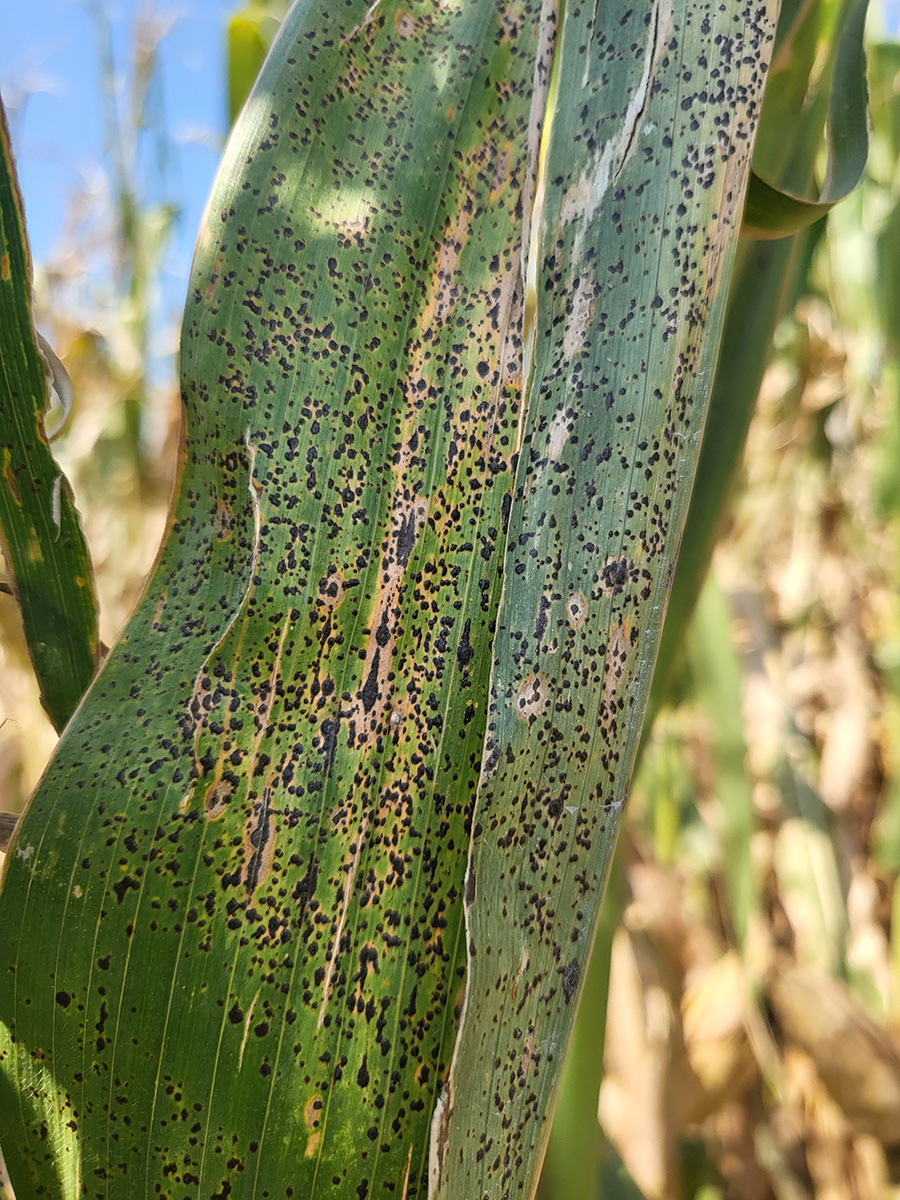
By John Nelson, Extension Educator in Lancaster County
Tar spot is a relatively new corn disease in Nebraska. It was first confirmed in a few eastern Nebraska counties in 2021, and has since been identified in all eastern counties, and as far west as Adams, Hall and Holt counties.
Tar spot is characterized by small, raised black spots across the upper and lower leaf surfaces. It is important to note that tar spot structures cannot be scraped off. If a black spot is found that can be scraped off, it is likely insect frass and not tar spot.
In Nebraska, the most severe incidences of tar spot have been in sprinkler-irrigated fields. This is because tar spot development is driven by higher relative humidity, longer periods of leaf wetness and more consistent precipitation and/or irrigation. All of these conditions are more often present in irrigated fields than in dryland fields, so irrigated fields are a good place to begin scouting for tar spot. Tar spot also favors moderate temperatures (60°F–lower 70s°F), so if cooler temperatures and consistent precipitation prevail during the growing season, it is especially important to begin scouting both irrigated and dryland corn fields.
It is also important to reiterate that the pathogen has been confirmed in every county in eastern Nebraska, and it can spread from nearby fields. Even if you haven’t seen it in your fields in the past, the conditions noted above can spur development of tar spot in areas where it has not been seen in previous years.
Some corn hybrids do have tar spot resistance ratings, so talk to your agronomist or seed dealer to see if there are any ratings for your hybrids. If you have a hybrid with a low tar spot tolerance rating, those fields would be another good place to begin tar spot scouting. Scouting should be done frequently, especially in the days and weeks approaching tasseling.
Fungicides have been found to be effective in research conducted at Purdue University. Fungicide efficacy is very dependent on when the disease develops and the timing of application. Common fungicide applications at tasseling may control tar spot if its development coincides with the timing of application. However, if environmental conditions are favorable, tar spot can develop later in the season after the tasseling stage, and those early fungicide applications may wear off before the tar spot arrives. Once again, we must focus on timely and regular scouting to determine if and when additional fungicide applications should be made.
If you do suspect you have tar spot this year, the UNL Plant & Pest Diagnostic Clinic (https://plantpathology.unl.edu/plant-pest-diagnostic-clinic) will diagnose any possible tar spot samples free of charge. Dr. Tamra Jackson-Ziems at the UNL Plant Pathology department is leading the research and Extension’s efforts related to tar spot in Nebraska. She can be contacted at tjackson3@unl.edu.